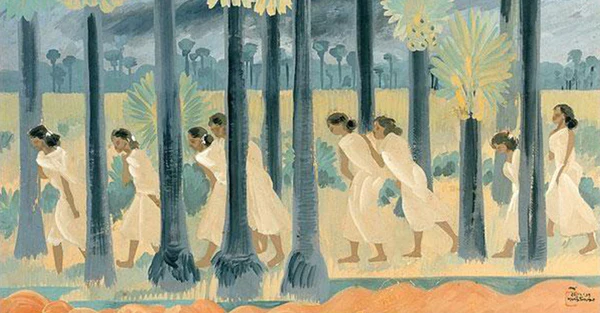Art is always an instrument that reflects the spirit of society. Through the ages the role of artists has played an integral role in shaping the narratives of culture. From the Renaissance period to the avant-garde movements in the 20th century, art has changed and evolved in a way that mirrors the changing landscape of human expression and thinking. In this in-depth research, we’ll dive into the revolutionary methods as well as movements which have determined the history of art.
The Evolution of Revolutionary Art
1. The Renaissance and the Rebirth of Humanism
The Renaissance was a time of significant cultural change in Europe and was marked by a renewed fascination with the classical arts, literature and the philosophy. Artists such as Leonardo da Vinci, Michelangelo and Raphael took on humanism, with a focus on human experiences and the possibility of individual accomplishment. This shift away from the traditional established the basis for a new age of exploration in art.
2. Romanticism and the celebration of Emotion
Then, moving forward to in the 19th century, Romanticism emerged as a response to the rationalism of the Enlightenment. Romantic artists, like Eugene Delacroix and J.M.W. Turner tried to provoke emotions and discover the sublime in their work. The emotions of nature, emotion, and the individual were central themes, challenging conventional notions and opening the way to the expression of the individual artist.
The Avant-Garde Movements of the 20th Century
1. Cubism along with Cubism and Deconstruction of Reality
The 20th century’s early years witnessed the emergence of Cubism which was spearheaded by Pablo Picasso and Georges Braque. The movement was a bid to dismantle the traditional concepts of representation and perspective by offering multiple perspectives simultaneously. The abstract, geometric forms required the viewer to be engaged with art in an entirely new and engaging way, setting the foundation for future avant-garde movements.
2. Surrealism and the unconscious mind
Influenced by artists such as Salvador Dali and Rene Magritte, Surrealism emerged as a response to the aftermath caused by World War I. Surrealist artists aimed to access the subconscious mind, examining dreams and the absurd. Through their fantastical images and unexpected juxtapositions, they sought to challenge conventional thinking and unravel the secrets of the human mind.
Contemporary Revolutionary Art
1. Abstract Expressionist along with Abstract Expressionism and Triumph of Gesture
In the late 20th century, Abstract Expressionism took center stage and artists such as Jackson Pollock and Willem de Kooning taking the lead. It was characterized by a frenzied, expressive brushwork, this style sought to express pure emotion and passion onto the canvas. The focus was on painting itself broke the boundaries of traditional art and set the stage for the subsequent abstract art movements.
2. Pop Art and the Rise of Pop Culture
The 1960s witnessed the rise in Pop Art, with artists such as Andy Warhol and Roy Lichtenstein elevating common items and the popular arts into the level of fine art. Through the appropriation of images from popular media and consumer cultural trends, Pop Art challenged notions of authenticity and originality and challenged the very concept of the art form and it’s position in the world.
The role Technology in Revolutionary Art. Technology In Revolutionary Art
1. Digital Art and the Democratization of Creation
As we enter our 21st century, technological advancement is an ingenuous factor in the world of art. Digital art, which includes everything from digital painting to reality installations, has revolutionized the process of creating. Artists are now able to explore new avenues of expression, challenging limits of conventional media and interacting with viewers on a an international scale.
2. Augmented Reality and Interactive Installations
Augmented Reality (AR) opens the possibility of interactive experiences in art. Artists can design immersive artworks that respond to the viewers movements, or change their perspective of the world. This combination of art and technology challenge the traditional way of viewing and invites viewers to be actively involved in the creative process.
As we continue to explore this pursuit of new art, it is essential to recognize sites that promote and encourage cutting-edge artistic endeavours. Artsyforward.com is an exciting blog that embodies the energy of innovation in the current art scene. Through engaging essays, interviews, and special features, it gives a glimpse into the ever-changing and diverse art world in the present. Find out more about the newest art movements and get the latest information.
Art of the Revolution is a continuous dialog between the past, present and future. From the time of the Renaissance to the present artists have constantly challenged the limits of their creativity, challenging social rules and changing the definition of art and expression. When we explore the many artistic landscapes of the revolutionary age platforms such as ArtsyForward are a great resource that connect art lovers to the dynamism of contemporary art. The growth of the arts is testimony to the enduring power of our imaginations Through the lens of revolutions we see the ever-changing web of human experience.

